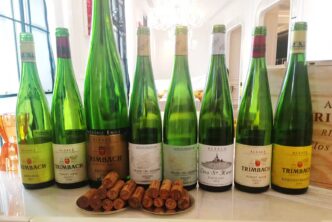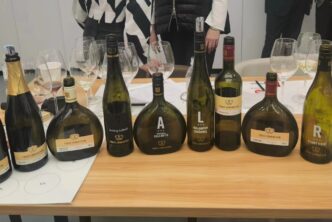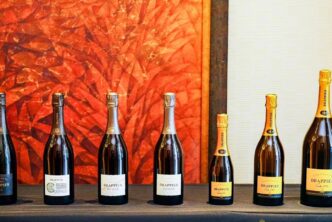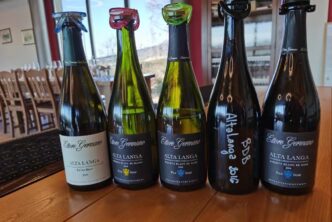Founded in 1978 by Luciano Sandrone, the Sandrone winery is one of Italy’s better-known and most iconic, producing about 130,000 bottles/year across three different grape varieties (Nebbiolo, Dolcetto and Barbera) the wines of which are each at the top of their respective qualitative heaps. You want a good Dolcetto d’Alba? Look no further than Sandrone, for his is one of the best (and unlike at many other wineries, Sandrone keeps making its Dolcetto d’Alba in large volumes: it’s an important wine for this winery). Rich, powerful, fleshy and round, Sandrone’s Barbera d’Alba is about as far removed from the more nervous, high-acid examples of Asti as can possibly be imagined. As good as these two wines are (and they are) Sandrone’s name has become synonymous over the years with top-level Barolos, many vintages of which rank amongst Italy’s greatest wines of all time.
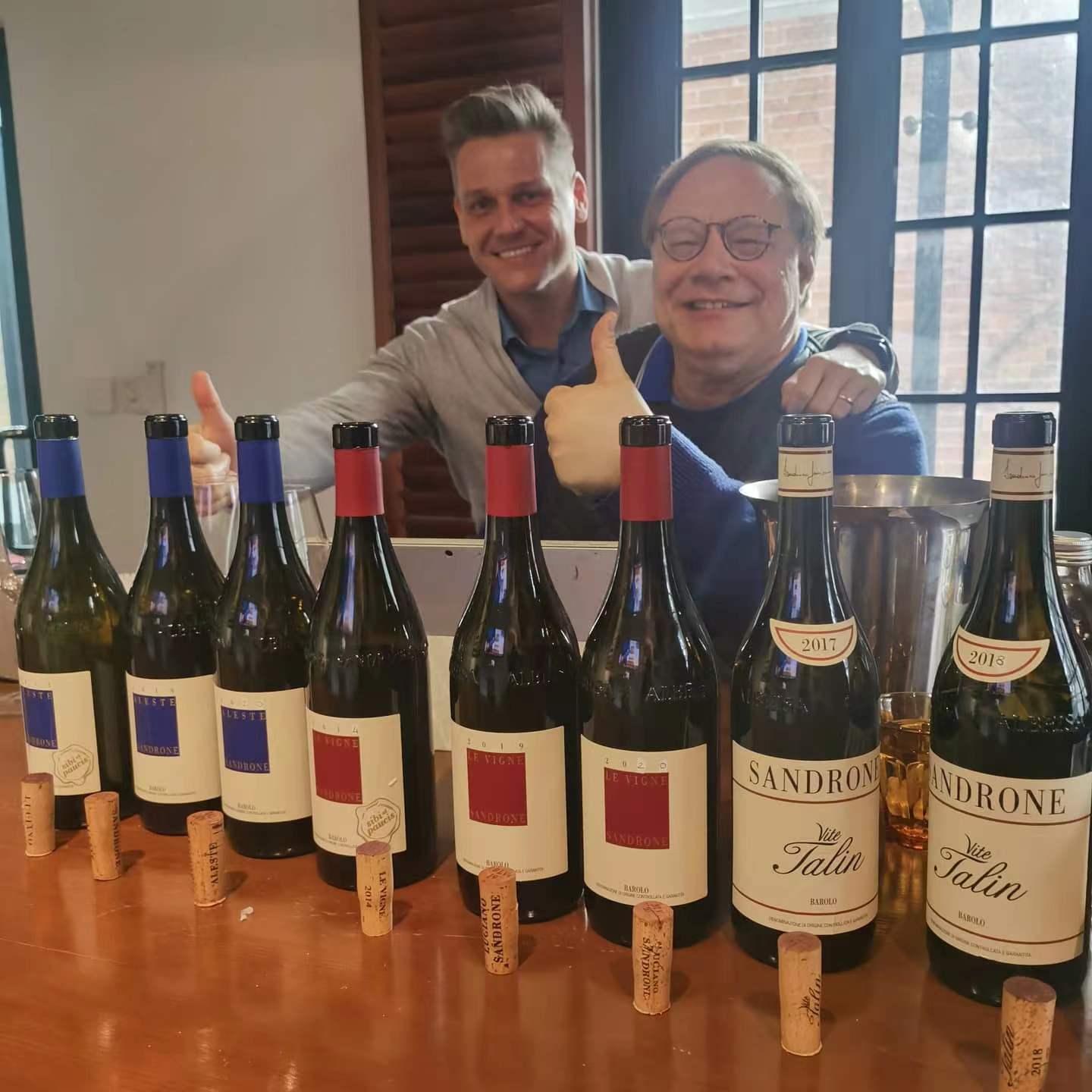
Luciano Sandrone bought his first vineyard in Barolo back in 1977 and made his first Barolo in 1978. Back then he held a day job acting as the cellar master at another very large Barolo winery, such that he could only tend to his vines on weekends and after hours. It is a testament to the man’s talent that only a few years later, in the lousy year that was 1984, he made one of the best Barolos of the year. That wine is famous in many other ways too: for one, it was the last one he sold with a white label and freestyle lettering, with the wine still identified as “Monghisolfo dei Cannubi”, which was the original name of the Cannubi Boschis portion of the extended Cannubi hill. The following year, in 1985, Sandrone launched his wine’s new name with the now also iconic cream-white blue and gold label that is immediately recognizable on store shelves and in wine cellars everywhere.
It’s hard to believe that until 1999, Sandrone made all his wines at home (he started out using the garage of his parents, giving the name of “garagiste” real meaning) more or less until he could use the new cellar facility and winery he had built in 1998. Appropriately enough, Sandrone built his new winery at the foot of the Cannubi Boschis hillside, the area that made his fame and fortune. Originally viewed as a member of the Barolo Boys, Sandrone’s wines were never made in extreme fashion: having tasted the great wines of the world repeatedly and visited many famous wineries (such as those of Burgundy) he understood only too well what falling into a similar trap would bring. And so it is that, still today, with the Sandrone wines now made by his younger brother Luca (sadly, Luciano passed away in January 2023), the winery’s Barolos straddle tradition and modernity with grace and ease. The estate, run very well by Barbara Sandrone, Luciano’s daughter, and by Luca, has now entered a new generation, with Sandrone’s grand-children soon taking over the helm.
Describing the recent and older vintages on sale this year
The 2020 and 2019 vintages are very different. The 2020 vintage will be remembered as the year of Covid, when everybody was locked in at home for months on end, wine producers included (clearly, they got to live lockdown in much better ways than us poor city folks). The 2020 vintage is characterized by rounder, fruit-forward, even charming wines that are more approachable and will likely be readier to drink than many other recent Barolo vintages. The growing season started with very mild temperatures, and so the growth cycle started off initially quite early. But then a more alternating weather pattern established itself (I dare say characteristic of these times of climate change) in which days of high heat alternated with days of rain. The rain was a constant in 2020, even in small volumes, meaning that the vines were never short of water that year (with the spring actually marked by some large rainfall episodes indeed). For this reason, some 2020 wines are less concentrated than one might like them to be, mostly because of excessive soil humidity (but I repeat, this as result of frequent small showers that fell regularly, not because of harvest time rainfalls) leading the vines to forward growth of their green components (leaves). However, the grapes seem to have escaped any green nuances. Some believe the 2020 wines to be somewhat like those of 2000, though I find that comparison a bit of a stretch: for one thing, in 2000, there was less water and more heat than in 2020 and its wines taste unfailingly less good than they should, fleshy behemoths that are obviously the product of a hot year and plagued with tannins of questionable refinement.

By contrast, the 2019 vintage is a modern classic, a year in which the Nebbiolo grapevines had no problems and were able to concentrate the juice within the grapes easily and slowly. The wines are very well-balanced, and stand out for a certain roundness despite their classic youthful structure and angularity. The 2019 wines will age extremely well and will be remembered as some of the better Barolos of the last twenty years. The wines are classic in a way that will remind those with enough experience of the Barolos made in the 1980s; and that’s a good thing, frankly.
I cannot really sit here and write that I am a fan of the wines of the 2014 vintage (if anything, I like the 2014 wines of Barbaresco a lot more than those of Barolo); but truth is, Sandrone’s 2014 Barolos were much better than the general average. Luca Sandrone goes one step further. According to him, the 2014 vintage is a year of classic wines that he really liked quite a bit, despite the copious rainfall that hit the denomination. Importantly, he points out that 2014 is a year in which the talent and hard work of the vignaiolo and the specific commune of Barolo in which the grapes were grown are all important, because though there was a lot of rain that growing season, it did not fall uniformly throughout the denomination. So while 2014, much like 2018, cannot be considered a great year, those producers who worked well came up with above average and at times even (perhaps unexpectedly) excellent results. For example, it was very important to risk leaving the grapes out on the vine; while many pulled the trigger too early and made poor wines, those who waited another two weeks before harvesting, like they did at Sandrone, made very good wines after all.
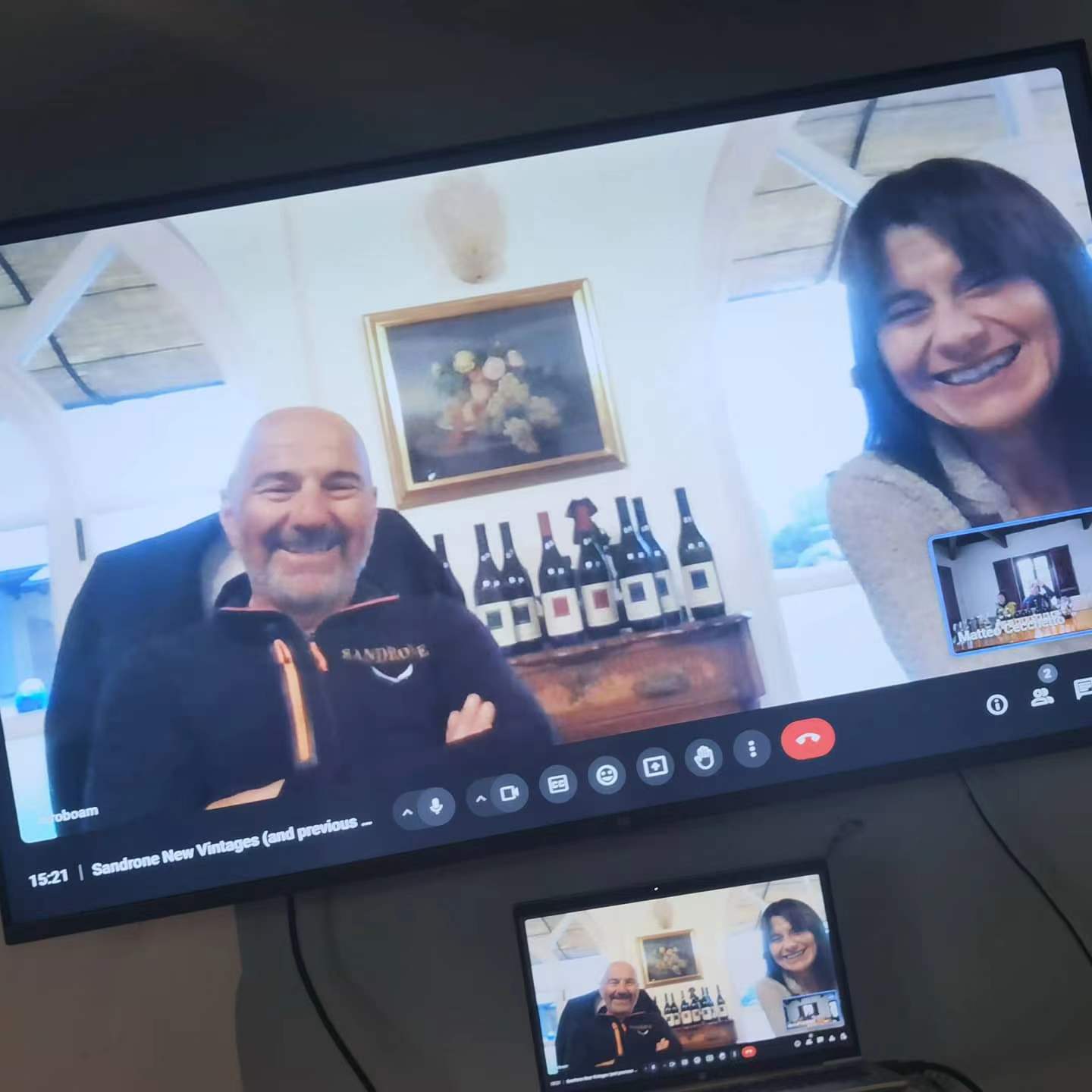
The wines in this tasting
All the wines in this report were tasted in Shanghai in March 2024 courtesy of Matteo Cecchetto, fine wine manager at Sandrone’s importer in China.
Sandrone 2020 Barolo Aleste 95+
Very deep red colour with a garnet rim. Dark red cherry, forest floor and violet are obvious on the nose, then a rare note of tar (rare for a Barolo that’s this young) emerges with aeration. Round, luscious and clean in the mouth, this showcases a minerally edge to the savoury dark red and candied violet flavours. A beautiful wine of very big potential but still very youthfully closed, you’ll need to be patient with this. Drinking window: 2028-2038.
Sandrone 2020 Barolo Le Vigne 98
Bright red. Balsamic oils dominate initially, followed with aeration by candied red berries and red cherry, and cinnamon. Remarkably ready to drink, fresh and light on its feet, this is very fruity in a non-Le Vigne sort of way, finishing long with a real mineral tang. The vineyards that were sourced in 2020 to make the Le Vigne bottling are: Le Coste di Monforte (Monforte), Cerviano-Merli (Novello), Vignane (Barolo) Villero (Castiglione Falletto), and Baudana (Serralunga d’Alba). Le Vigne is a Barolo that harkens back to how Barolo was once made, by blending the grapes from more than one vineyard site and often different communes too. It is always a very successful wine because each vineyard area contributes something to the final wine, though some of the earlier vintages of Le Vigne, made with a preponderance of Nebbiolo grapes grown on Lequio Formation and Diano sandstone soils (those that mostly typify Monforte and Serralunga), were often a little tough and rigid in their youth, requiring plenty of time to blossom fully. I find that today’s blend of Le Vigne grapes is the best one yet, coming from vineyards that are ideally mixed and matched: Le Coste di Monforte in Monforte and Cerviano-Merli in Novello are the coolest of the five vineyard areas (Le Coste is at 550 meters asl with a south/southeast exposure; Sandrone’s vines in Cerviano-Merli are really in Merli at about 420 meters asl facing south/southwest, but as they look out to the Tanaro River, there’s an element of freshness that lifts the more tropical fruit presence typical of the fruit from this vineyard area). Vignane contributes an “angular roundness”, if you allow me the oxymoron, and it also has the advantage of being endowed with good water retention capacity even though Sandrone’s vines are southwest-facing and grow in a hot area of the cru (and so this cru does very well in droughty years). Baudana is the biggest of Sandrone’s vineyard plots and supplies a lot of skeleton, or structure, to the wine; Villero, which is another site that gives power, in the case of Sandrone’s Le Vigne throws you a bit of a curveball, given that it’s a very sandy, looser-structured section of Villero and so it gives a more elegant wine than is commonly associated with Villero, a cru where refined power is usually the name of the game. For those who can actually sue such information, it is worth knowing that in the 2020 Le Vigne there is a little more of Le Coste (while there was very little in the 2019) and less Vignane. Drinking window: 2028-2040.
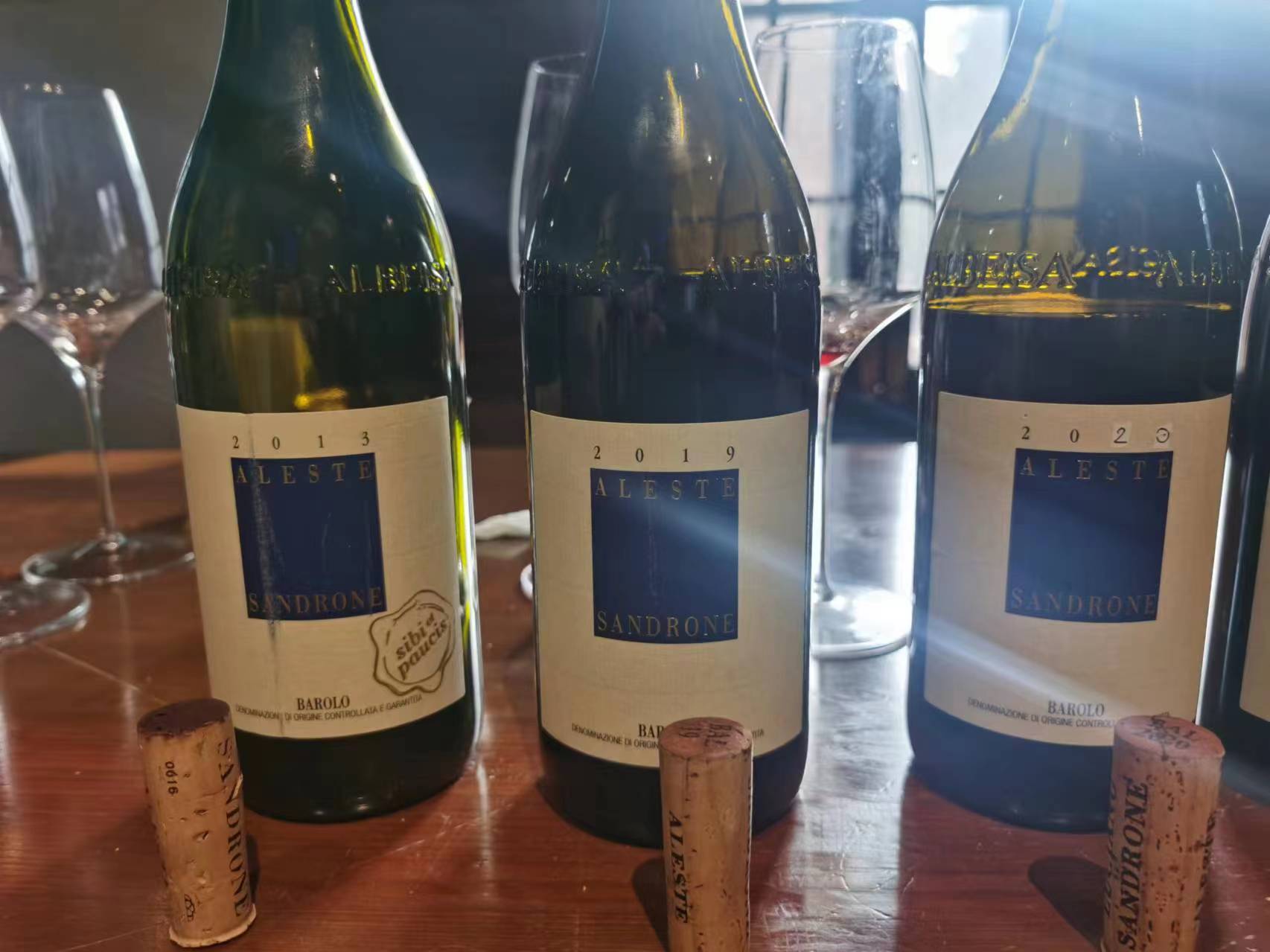
Sandrone 2019 Barolo Aleste 99
Now this is spectacular. As good as Sandrone’s 2020 wines are, this is just superlative. Deep red. Elegant, expressive and deep aromas of red rose, red cherry, minerals, sandalwood, lavender and ink. Then very long, clean and mineral, at once very powerful but refined, boasting remarkable purity of the concentrated blue and red fruit and floral flavours. Finishes with a steely-like personality and a rigid mouthfeel that requires time to round out fully, but this is crammed with fruit. Knockout Barolo that is very, very young but has incredible potential to turn out to be a really memorable wine. Drinking window: 2028-2044.
Sandrone 2019 Barolo Le Vigne 97
Good full red. Cardamom, cinnamon and cumin complement the rose and red cherry, minerals and herbs on the complex, inviting nose. Less obviously fruity in the mouth, though very pure, silky, elegant and long. Not as obviously fruit-forward and already approachable as the 2020 Le Vigne, this is a very classic Barolo, pure, mineral and taut. Outstanding wine that needs food to show best right now, but this will develop splendidly; don’t touch a bottle for another five years at least. There is more Vignane in the 2019 Le Vigne than in the 2020. Drinking window: 2029-2042.

Sandrone 2014 Barolo Le Vigne Sibi e Pauci 94
Pale medium red. Clean fresh and very floral, almost pungent, on the nose with notes of black cherry, menthol (not mint) and lavender, plus a hint of exotic spices. Then also fresh and clean in the mouth, with a laser-like acid layer that lifts and extends the red and dark herbal fruit flavours on the rather saline, red berry-accented finish. Not the most powerful Barolo, in keeping with the year, but well-balanced and clean. The 2014 was a difficult rain-plagued vintage (with episodes of hail and even water bombs recorded) that at Sandrone they handled beautifully, hiring twice as many workers as usual to take care of their vineyard, and that effort and dedication paid off. The Sibi e Pauci line of Barolos are library releases that go on sale ten years after the vintage date so as to give wine lovers a chance to enjoy mature, properly-aged wines. Drinking window: 2024-2032.
Sandrone 2018 Barolo Vite Talin 94
Deep red with ruby tinges. Very rigid, high acid and not especially fruity in the mouth, with dominant mineral, smoky and peppery nuances on the long taut finish. This will be released in September 2024, and the extra months in bottle ahead will surely help it. The 2018 vintage is a fresh and slightly difficult year, though the Talin bottling differentiates itself as its specific, unique Nebbiolo biotype appears to perform best in the difficult years such as the cold and rainy ones. For example, Barolo insiders know that the 2017 Vite Talin Barolo is very concentrated, but ultimately it’s not so different from the 2017 Barolos Aleste and Le Vigne, while in 2014 and 2018, the Talins are more impressive wines than the other two Sandrone Barolo. That much recognized, I still think that the 2018 vintage was an extremely difficult one for Barolo, finding the wines somewhat stewed and fruit-challenged; and though Sandrone’s Vite Talin is way better than most 2018 Barolos you’ll taste, I still like this less than the 2016 and 2017 Vite Talins. Talin is a specific and rare biotype of Nebbiolo discovered by a farmer called “Talin” (hence the wine’s name) that Sandrone has worked with for close to thirty years, and makes the most expensive bottling in the Sandrone lineup. Drinking window: 2024-2034.

Sandrone 2017 Barolo Vite Talin 96
Deep red. Very lactic on the nose initially, then opens and becomes richer and fresher with aromas and flavours of dark and red cherry, earth, forest floor, camphor and orange peel. Boasts a very nice mouthfeel, with rather silky tannins for the year, turning fleshier and sweeter on the long, tactile finish. The Talin Nebbiolo is a very different Nebbiolo in its organoleptic profile compared to those of the Nebbiolo Lampia of the Aleste and the Le Vigne bottlings. Talin is a specific and rare biotype of Nebbiolo discovered by a farmer called “Talin” (hence the wine’s name) and makes the most expensive bottling in the Sadrone lineup. Drinking window: 2024-2036.

 中文
中文
